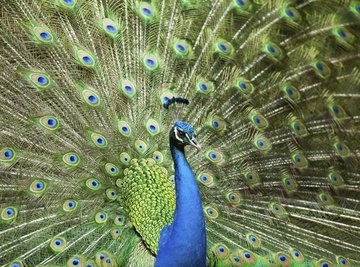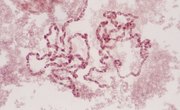
Primary and secondary sexual characteristics refer to specific physical traits that set apart males and females in sexually dimorphic species; that is, species in which the males and females look different from each other. Primary sexual characteristics are there from birth (for example, penises vs. vaginas). Secondary sexual characteristics emerge at puberty (such as low voices and beards in human males, and high voices and no facial hair in human females).
TL;DR (Too Long; Didn't Read)
Primary and secondary sexual characteristics are physical traits that make males and females look and behave differently from each other in certain species, including humans. Primary sexual characteristics are those that are present at birth, and are determined by chromosomes’ influence on hormones in utero for mammals, and on other factors such as egg incubation temperature for some reptile species.
Secondary sexual characteristics appear during puberty. These characteristics are not used in sexual reproduction, but are important for attracting a mate - such as long tusks or brightly colored scales - or being able to provide care for offspring - such as human breasts or marsupial pouches.
Males in sexually dimorphic species typically have ornamented appearances and behaviors, such as the peacock’s flashy plumage or numerous birds’ specialized dances or songs, in order to attract females. The choosy female theory purports that females choose males with bigger, brighter and better ornamentation to increase the viability of her offspring by choosing a mate with good genes. This may either be because her sons are more likely to have those same attractive traits, perpetuating her genes (the “sexy sons” hypothesis) or because those traits are associated with strength and resilience to disease, making them more likely to survive in order to reproduce (the “good genes” hypothesis).
Primary Sexual Characteristics
Primary sexual characteristics are those that are present at birth. In mammals, sex is determined through hormonal events in utero that under normal circumstances are controlled by the combination of X and Y chromosomes. If an egg is fertilized with a sperm carrying the X chromosome, the gonads should develop into ovaries and the offspring will be female; if the egg is fertilized with a sperm carrying the Y chromosome, the gonads should develop into testes and the offspring will be male. (There are many exceptions to this, but these are considered anomalies.)
Some reptile species, including most turtles and all crocodilians, utilize temperature-dependent sex determination to control the sex ratios (number of males to females) of their offspring. In these species, eggs incubated within a low temperature range typically produce one sex and eggs incubated within a higher temperature range produce the other.
Secondary Sexual Characteristics
Hormones secreted through the hypothalamus initiate the development of classically male or female secondary sexual traits. These secondary sexual characteristics are not used in reproduction, but are apparent in most sexually dimorphic species - species having two forms that are determined by their sex. Secondary sexual characteristics include human female breasts, human male facial hair, the mane on a male lion, and the bright, flashy plumage of many male birds and fishes.
Female Mate Choice
The persistence of male ornamentation in animal populations is thought to be driven by female mate choice and/or male-male competition. The choosy female theory purports that females choose males with bigger, brighter and better ornamentation to increase the viability of her offspring by choosing a mate with good genes. This increase in viability can take place through two mechanisms.
In the sexy sons hypothesis, the female chooses the flashy male because his ornamentation will be passed to her sons, thereby giving her sons a greater chance of reproducing and perpetuating her genes. The good genes hypothesis supposes that the female chooses the flashier male because his ornamentation may represent increased disease resistance or other fitness benefits that may be passed to her offspring.
Male-Male Competition
Some secondary sexual characteristics give a dominant male an advantage, such as the ability to overcome his opponents in physical battle, which may win that male the right to mate with a female, thus increasing his genetic contribution to the population. This dominant male will be able to mate with more females than less-dominant males, presumably due to superior characteristics like tusks and antlers, that can be used as weapons when fighting other males.
Because he will be able to mate with more females, the genes for the superior fighting characteristic will become prevalent in the population; in other words, that characteristic will be naturally selected.
References
About the Author
Ari Reid has a bachelor's degree in biology (behavior) and a master's in wildlife ecology. When Reid is not training to run marathons, she is operating a non-profit animal rescue organization. Reid has been writing web content for science, health and fitness blogs since 2008.
Photo Credits
lirtlon/iStock/Getty Images
